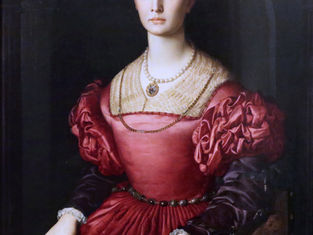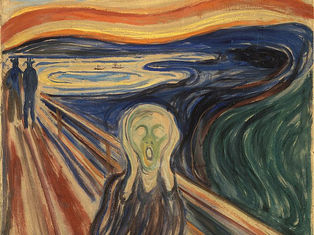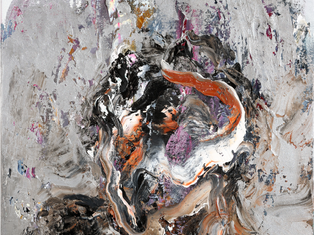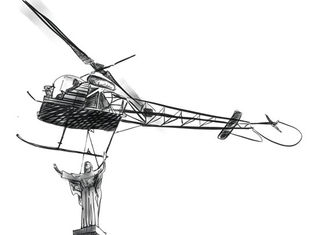top of page
Articles


Who Am I?
One of the problems of having lived a long life is that it brings home to one the many different identities one has occupied in the...

Edward Lucie-Smith
4 min read


The Politics of NHS Spending
The UK’s National Health Service (NHS) was set up in 1948 following the 1942 Beveridge report, a cross-party report which established its...

Fatima Osman
6 min read


Making BBC Four’s African Renaissance: In Conversation with Russell Barnes and Clare Burns
Russell Barnes is a Director and Producer for the documentary production company ClearStory. Clare Burns has worked in television...

Helen Grant
10 min read


In the Wake of Colston: Wake Work after Woke Work
What does it mean to defend the dead? To tend to the Black dead and dying: to tend to the Black person, to Black people, always living in the push toward our death? It means work. It is work: hard emotional, physical, and intellectual work that demands vigilant attendance to the needs of the dying, to ease their way, and also to the needs of the living. —Christina Sharpe[1] A world divided into compartments, a motionless, Manicheistic world, a world of statues: the statue o

Jacob Badcock and Jovan Owusu-Nepaul
19 min read


Traversing the Art Legal System in Early Modern Venice: The Case of Antonio Floriano’s Mappamondo
The application of print privilege (pre-copyright) legislation to Venetian cartography came about by chance.[1] While the Venetian Republic was not the first state in Europe to construct a system of printing privileges, it was the earliest to grant limited monopolies for cartography and artwork. Intended originally for bestowing printed book privileges, the wording of the sixteenth century legislation and printing culture of Early Modern Venice enabled the expansion of the pr

Sarah Alexis Rabinowe
26 min read


Art and Arbitration: In Conversation with Camilla Perera-de Wit and Bert Demarsin
Camilla Perera-de Wit is the Secretary-General and Director-General of the Netherlands Arbitration Institute (NAI). Her previous experience in dispute resolution includes her work at the Permanent Court of Arbitration (PCA) and at P.R.I.M.E. Finance. She is a board member of the Court for Arbitration of Art (CAfA) in Rotterdam. Bert Demarsin is a law professor at KU Leuven, who has conducted extensive work on art disputes. His work particularly focuses on provenance and aut

Elliot Wright
8 min read


Justice Must Be Seen to Be Done
A central image in the consideration of law is the totemic figure of justice—Justitia—the blindfolded Roman goddess of justice. Often appearing in statue form in many courthouses and carrying a sword and scales, she heralds the idea of law as impartial and unseeing, of law as a system that, theoretically at least, is open to all—democracy as a form of blindness. The irony of this sightlessness will not be lost on artists, who tend (with good reason) to think of law as oafishl

Carey Young
6 min read


Cultural Appropriation: A Gap in the Law?
The Jamaican Jerk seasoning. Halloween. Kendall Jenner’s new Tequila brand. The mascot of the Washington Redskins. Rugby. Victoria’s...

Mirjam Dietrich
14 min read


Americanitis: Architecture, Mass Media, White Supremacy
The origins and definition of the word ‘Americanitis’ are opaque at best. It is generally believed to have appeared in medical journals of the late nineteenth century, describing a particular nervous ailment found in the inhabitants of the United States of America. Thought to cause disease, heart attack, nervous exhaustion, and even insanity, Americanitis was seen as a serious threat to the American public. In fact, in 1925, Time Magazine reported that Americanitis was respo

Nicolas Canal Tinius
15 min read


Bronzino’s Panciatichi and the Petrarchan Ideal
Fig 1. Portrait of Lucrezia Panciatichi (Bronzino 1545, oil on panel, 102 x 85cm). Uffizi, Florence. Wikimedia Commons....

Ruairi Smith
4 min read


Mad Genius: Art, Illness, and Recovery
Art historians and psychologists alike have long been fascinated by the tentative relationship between art and mental illness. A number...

Amelia Bateman and Lucy De-Rhune
11 min read


The Space Race and Its Discontents: Hannah Arendt on Space, 1951-63
Introduction Arendt’s account of modernity and The Human Condition (1958)[1] Opening the final section of The Human Condition...

Clare Francis
20 min read


Copyright Law between Art and the Internet: In Conversation with Professor Andreas Rahmatian
Professor Andreas Rahmatian is Professor of Commercial Law at the University of Glasgow School of Law. Originally from Vienna, he obtained his first degree in law and a PhD in Private Law from the University of Vienna, and completed another degree in musicology and history there. He holds an LLM from the University of London. He worked as an associate attorney-at-law in Vienna and qualified as a solicitor with a City firm in London before he became a full-time academic. He ha

Thomas Hood
22 min read


Augustine on Canonical Penance: An Ethic of Criminal Sentencing
Introduction Canonical Penance in the early Church and the modern concept of prison, broadly construed, are both processes of...

Alexander Levy
21 min read


Does the Concept of ‘Spiritual Resistance’ Add to our Understanding of Jewish Life in the Ghettos?
In his seminal 1961 work The Destruction of the European Jews , Raul Hilberg proposed a thesis that sought to explain a perceived lack of...

Nathaniel Rachman
23 min read


Elite Overproduction: An Inside Perspective
1 To become an administrative official in imperial China necessitated following a burdensome path from an early age. To begin with, a...

Jakob Gomolka
10 min read


Painting through Doubt and Despair: In Conversation with Maggi Hambling
Maggi Hambling CBE is a painter and sculptor. Subjects for many of her paintings are the sea and the dead. Her sculptures are famous and...

Alexander (Sami) Kardos-Nyheim
2 min read


A Queer Theory Reading of Christabel by Samuel Taylor Coleridge
Elizabeth Susan Wahl suggests that during the eighteenth century, homosexual relations between women became an ‘open secret’ that was...

Lily-Rose Morris-Zumin
6 min read


Patriarchy and Politics: In Conversation with Professor Cynthia Enloe
Well-known for her book Bananas, Beaches and Bases , exposing the embedded systemic and institutionalised patriarchy that is evident not...

Teresa Turkheimer
13 min read


The Role of Architecture in International Law
Turrets and spires tower over rich façades and stained-glass windows. Ornate vases sprout up from formal Versaillais parterres made of...

Alessandro Angelico
8 min read


Directing the Design Biennale: In Conversation with Victoria Broackes
Victoria Broackes is Director of the 2021 London Design Biennale. Previously she worked for the Victoria and Albert Museum (V&A): as...

Joseph Court
11 min read


‘Canst thou draw out Leviathan with an hook?’: Job 41 in Hobbes’ Masterpiece
Can you draw out Leviathan with a fishhook, or press down its tongue with a cord? Can you put a rope in its nose, or pierce its jaw with a hook? Will it make many supplications to you? Will it speak soft words to you? Will it make a covenant with you to be taken as your servant forever?[1] * The rich symbolic inner workings of Hobbes’ Leviathan have been much commented on in the centuries since its publication, with most attention being given to its incomparable frontisp

Peter McLaughlin
12 min read


Mapping the Modern Sacred in Federico Fellini’s La dolce vita (1960) and Paolo Sorrentino’s La grande bellezza (2013)
The assumption we live in a secularized world is false. The world today … is as furiously religious as it ever was. —Peter Berger[1] Fig...

Marie-Louise James
12 min read


The French Veil Debate: State Insecurity and the Family
The family is often presented as an opponent to the state as the location of power, or as an alternative to state institutions. The 2004...

Mary Osborne
12 min read
bottom of page

